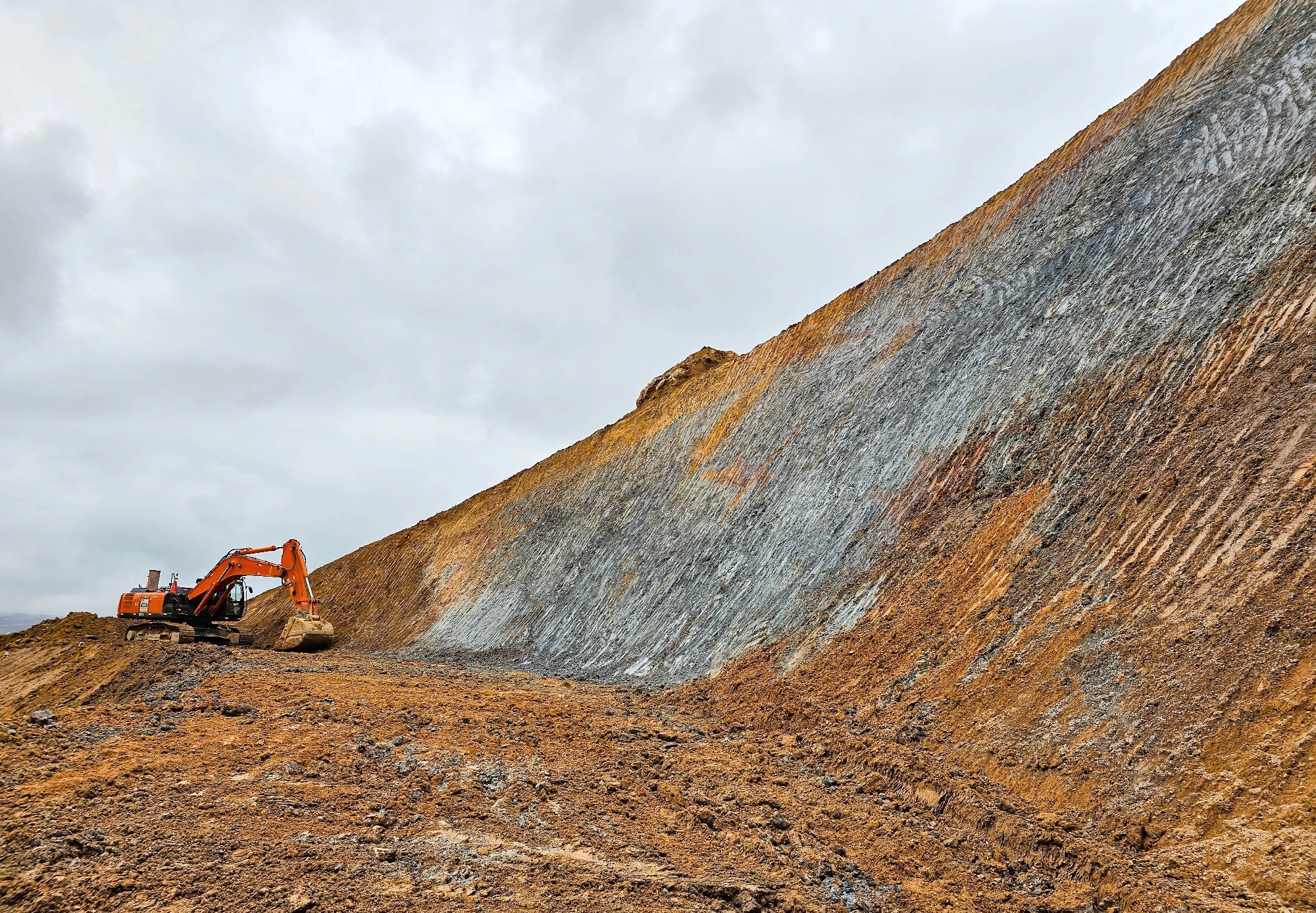In a recent article published in Scientific Reports, researchers investigated the stability of gently inclined, counter-tilted rock slopes subjected to mining-induced disturbances. They focused on predicting and analyzing potential shear slip surfaces within locked rock masses.

Image Credit: WILLIAM LUQUE/Shutterstock.com
Background
The stability of rock slopes impacted by mining operations is a subject of extensive geological and engineering interest. Underground mining can induce stress redistributions, fractures, and deformation within adjacent slopes, often catalyzing landslides or slope failures.
Traditional approaches to assessing slope stability have primarily relied on theoretical analyses, physical modeling, and numerical simulations, each offering insights but also facing limitations regarding accuracy, scale, or applicability. Prior research has highlighted the importance of understanding the deformation mechanisms, particularly the role of intact and fractured zones within the slopes, which can be a prelude to failure.
Locked segments—zones of relatively intact rock amidst fractured or disturbed zones—have been identified as critical components controlling slope response to mining disturbances. Their high shear strength and geometric dimensions make them crucial for overall stability. Nonetheless, accurately predicting the location and mechanical behavior of shear slip surfaces in these marked zones remains challenging, necessitating an integrated approach combining various analytical techniques.
The Current Study
The study's methodology was multifaceted, involving numerical simulations, physical testing, and theoretical analysis anchored in a representative slope known as the Meidong Slope. Initially, a geometric model of the slope was constructed based on the results of numerical modeling that simulated the effects of mining activities, especially the development of fractures and deformations within the rock mass.
The model delineated the slope into five characteristic zones: the locked area, the proximity-disturbed and fragmented area, the coal pillar protection zone, the disturbed and fractured area, and the undisturbed zone. Fissures labeled LF1 and LF2 were positioned above specific boundary points to mark zones susceptible to failure.
The researchers employed limit equilibrium analysis (LEA) for the analytical component to assess slope stability. This involved calculating the forces acting on different segments of the slope, especially the effective rock masses within the zones affected by mining. The key parameters incorporated included the effective mass of the rock, the forces acting upon it (primarily gravitational and external forces), the geometric dimensions such as base lengths and heights, and the inclination angles. These calculations aimed to identify the potential slip surface by comparing the shear capacity of the rock mass with the driving forces resulting from mining-induced stresses.
Results and Discussion
The analysis revealed that the shear slip failure primarily occurs along zones experiencing the highest tensile and shear stresses, predominantly within the region labeled as area IV—an affected zone characterized by significant fragmentation and displacement due to mining. The numerical simulations illustrated that post-mining deformation exhibited a complex failure pattern, incorporating "toppling," compression, and shear modes. The deformation was observed to be most pronounced near the surface and within the damaged zones, where stress concentrations reached critical levels.
The limit equilibrium analysis demonstrated that the stability of the slope was highly dependent on the location and properties of the locked segments. The model identified the A9 coal seam zone as a potential shear slip surface. It confirmed that the shear failure would initiate preferentially along this stratum, owing to its mechanical weakening and proximity to mined-out areas. The model's predictions showed strong consistency with the numerical and physical test results, confirming the validity of the approach.
The findings underscored the critical contribution of the locked rock mass to slope stability; once compromised, these segments serve as stabilizers and potential failure planes. The study discussed how mining activities alter the stress distribution, reducing the internal support of the locked segments, and induce deformation that can ultimately lead to slip failures. It emphasized that understanding the interaction between the various zones and their mechanical properties is essential for practical risk assessment.
Conclusion
This research presents a sophisticated, integrated approach for predicting shear slip surfaces in locked rock masses within gently inclined, counter-tilted slopes affected by mining.
The combination of numerical simulations, physical tests, and theoretical analysis constructs a detailed understanding of the failure mechanisms at play, emphasizing the critical role of locked segments in maintaining or losing slope stability.
The developed predictive model successfully identifies the most probable slip zones, notably along specific coal seams such as the A9, and demonstrates that mining affects the redistribution of stresses and induces deformation conducive to failure. The findings underscore the importance of focusing monitoring and reinforcement efforts on the identified critical zones to prevent landslides. The model provides a scientific basis for engineering interventions, enabling engineers to design more effective stabilization measures tailored to the slope's complex geological and mining conditions.
Source:
Meng W., Dai Z., et al. (2025). Prediction of potential shear slip surface in locked rock mass of gently inclined counter Tilted rock slope under mining effects. Scientific Reports 15, 17790. DOI: 10.1038/s41598-025-02256-9, https://www.nature.com/articles/s41598-025-02256-9